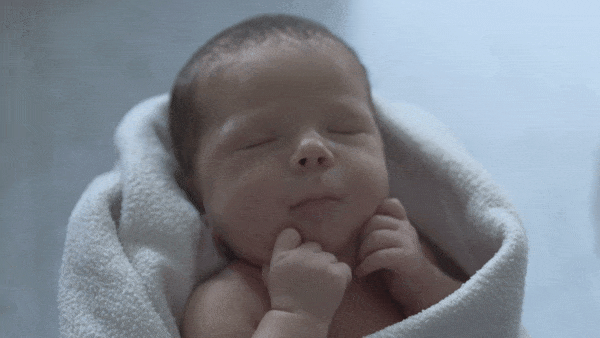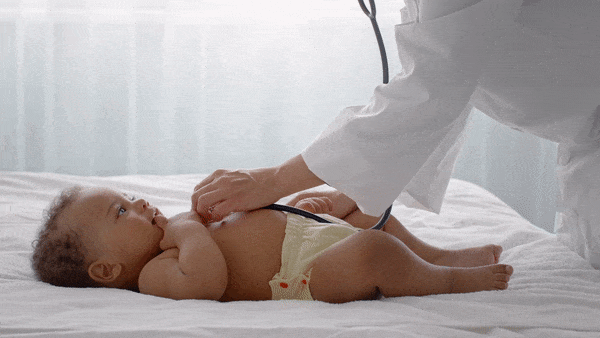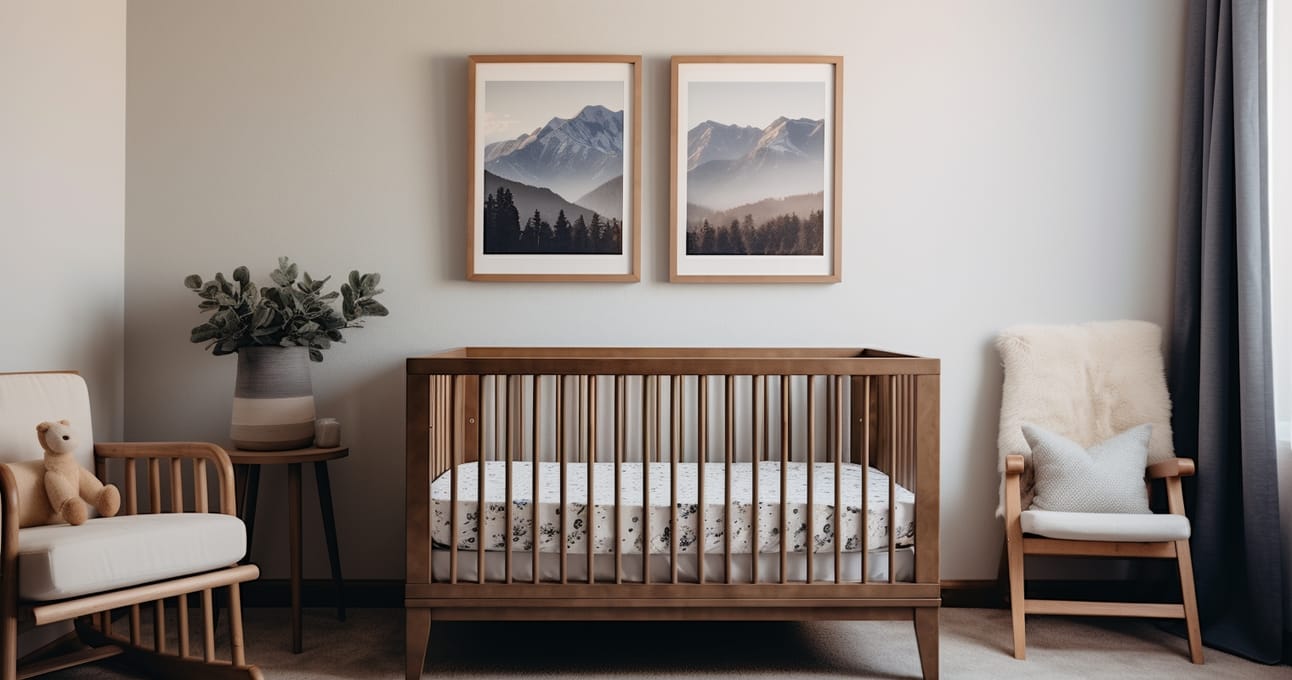Hey there, mama! Faced with the big question of "Bassinet or Crib?" and can't make heads or tails of it?
Trust me, you're not alone. This is a major decision, and it's totally okay to feel overwhelmed.
In this must-read guide, we'll unravel the safety features, pros and cons, expert recommendations, and much more.
So if you're itching to make that perfect choice for your bundle of joy, keep reading. Seriously, you won't want to miss this.
So, what do doctors say about the Bassinet vs Crib debate?
According to pediatric experts and AAP guidelines, both bassinets and cribs are safe for newborns if they meet current safety standards. Bassinets are portable and convenient for the early months but have a weight limit. Cribs are a longer-term investment, offering more space but less portability. The best choice depends on your living situation, budget, and lifestyle.
What's the Big Debate: Bassinet or Crib?

Why It's a Crucial Choice for New Parents
So, you've got a baby on the way. Yay! But now, you're knee-deep in decisions.
One big one?
Whether to go for a bassinet or a crib. It's more than just furniture, folks.
This choice will be your baby's first sleeping spot, a sacred space where they'll spend a lot of time during their first months or even years.
Why It Matters:
Sleep Quality: Babies sleep a lot! A comfy, secure space can help improve their sleep quality (and yours).
Safety: We all want the safest option for our little ones. More on this soon.
Convenience: Each option has its pros and cons for tired moms and dads.
Budget: Prices can vary wildly. What gives you the best bang for your buck?
But don't sweat it. By the end of this guide, you'll have all the information you need to make a well-informed decision. Promise!
How Safe Are Bassinets and Cribs for My Newborn?

As moms, safety is our number one concern, isn't it?
So, let's get into the nitty-gritty of what to look for in both bassinets and cribs to ensure that our babies are as safe as can be.
Bassinet Safety Features to Look For
Certification: Make sure it meets safety standards. Look for a JPMA certification.
Sturdiness: Press on it a bit. If it wobbles, move on.
Mesh Sides: For better airflow.
Firm Mattress: Your baby's mattress should be as firm as a cracker, not soft like a marshmallow.
Weight Limit: Most have a weight limit of about 15-20 pounds. Keep that in mind!
No Frills: Avoid bassinets with a lot of frilly fabric or soft bedding.
Tips & Tricks:
Locking Wheels: If it has wheels, make sure they lock.
Snug Sheets: They should fit like a glove. No loose fabric!
Crib Safety Measures to Consider
Slats: No more than 2 3/8 inches apart. We don't want tiny heads getting stuck!
Corner Posts: Should be flush with the headboard and footboard.
Mattress Fit: It should fit snugly within the crib. No gaps!
Stability: Give it a good shake. If it wobbles, it's a no-go.
Certification: Again, look for that JPMA certification.
Tips & Tricks:
Adjustable Mattress Height: Helpful as your baby grows and becomes more mobile.
Teething Rails: A nice feature to protect the crib (and tiny teeth!).
The bottom line? Both bassinets and cribs can be safe if you know what to look for. So take a deep breath, mom. You've got this!
For more information on safety standards, check out the latest AAP guidelines. They're our go-to for all things safe sleep.
What Are the Pros and Cons of Bassinets?

Portability and Convenience
Ah, bassinets. These little wonders are perfect for those first few months. Why? Well, they're super portable. Yup, you can easily move it from room to room.
Advantages of Portability:
Night Feeding: Perfect for those middle-of-the-night feedings.
Close Contact: You can keep your newborn close without co-sleeping.
Small Size: It takes up less space, ideal for apartment living.
Tips & Tricks:
Wheel Locks: For safety, always lock the wheels when it's stationary.
Storage: Choose one with storage underneath to keep essentials at hand.
When Does a Bassinet Become Less Practical?
No sugarcoating it—bassinets have a shelf life. Once your baby hits a certain weight or starts to roll or sit up, it’s time to move on.
Limitations to Consider:
Weight Limit: Usually around 15-20 pounds.
Limited Space: Babies outgrow them quickly.
No Convertibility: Unlike some cribs, you can't adapt them for toddler use.
If you're struggling with your baby's aversion to the bassinet, find solutions in 'Why Your Baby Hates the Bassinet—and How to Fix It'.
What Are the Pros and Cons of Cribs?

Longevity and Room to Grow
Cribs are the marathon runners of baby furniture. They're in it for the long haul.
With adjustable mattress heights and some models converting to toddler beds, you're looking at years of use.
Pros:
Space: Plenty of room for your growing baby.
Versatility: Convertible models can last through the toddler years.
Tips & Tricks:
Conversion Kits: Buy them when you buy the crib, just in case they get discontinued later.
The Drawbacks: Size and Expense
Here’s the flip side. Cribs are big and usually pricier. They're a permanent fixture in your nursery.
Cons:
Space: You'll need a dedicated spot.
Cost: Generally, they're a bigger investment upfront.
What Do Doctors and Experts Recommend?

AAP Recommendations for Safe Sleep
The American Academy of Pediatrics recommends room-sharing without bed-sharing.
Both bassinets and cribs can be good options for this, provided they meet safety standards.
Key Takeaways:
Flat and Firm Surface: Always!
No Extras: Skip pillows, blankets, and toys.
For more in-depth guidelines, you can check out the AAP's official recommendations.
Expert Opinions and Reviews
Real talk? The best option varies from family to family.
Pediatricians generally say both are okay if they're safe and meet current standards.
Consumer Reports and various parent reviews often offer practical insights too.
Things to Note:
Age and Mobility: Consider how long and in what ways you plan to use it.
Lifestyle: Are you a frequent traveler or do you stay mostly at home?
So there you have it! Whether you go team bassinet or team crib, you’re now armed with all the info you need to make the best choice for your family.
Learn how to make the transition smoother with 'When and How to Transition from Bassinet to Crib'.
Should I Consider Used or Alternative Options Like Pack-And-Play?

Is Buying Used Safe and Economical?
Let's talk about used options. They're tempting, especially for your wallet.
However, it's crucial to remember that not all used items are created equal.
Checklist for Buying Used:
Recall History: Make sure it hasn’t been recalled.
Safety Standards: Check if it meets current safety standards.
Cleanliness: Look for any signs of mold, dirt, or bugs.
Tips & Tricks:
Local Groups: Places like Facebook Marketplace or local parenting groups are good spots for used items.
Sanitize: Use a baby-safe disinfectant before use.
Exploring Pack-And-Play and Other Alternatives
There are other sleep solutions beyond bassinets and cribs. Pack-and-plays are versatile and travel-friendly.
Why Choose Pack-and-Play:
Multi-Functional: They often come with changing stations.
Portability: Folds up easily for travel.
Other Alternatives:
Co-Sleepers: Allows baby to sleep next to your bed safely.
Travel Cribs: Great for frequent travelers.
What Key Factors Should Guide My Decision?
Budget Considerations
The cost factor is undeniable. Cribs tend to be pricier but last longer, while bassinets are generally cheaper but have a shorter lifespan.
Budget Tips:
Multi-Use Items: Opt for convertible cribs or pack-and-plays with multiple functions.
Sales and Discounts: Look out for these, especially during holiday seasons.
Room Space and Family Lifestyle
How much room do you have? Are you always on the go? These are critical questions.
Room Space Tips:
Small Spaces: Bassinets or mini-cribs are better.
Big Rooms: A full-size crib could work well.
Family Lifestyle Tips:
Travel Often: Pack-and-plays or travel cribs are your friends.
Stay at Home: A sturdy, convertible crib may be the best investment.
The Baby’s Needs and Preferences
Last but not least, consider your baby. Some infants prefer the snugness of a bassinet, while others may need the space a crib provides.
Things to Observe:
Sleep Habits: Does your baby toss and turn or stay fairly still?
Growth Spurts: A rapidly growing baby may outgrow a bassinet quickly.
Pro Tips:
Trial and Error: It might take some experimenting to find what your baby likes.
There you go, momma! With this guide, you're more than ready to make an informed decision that best suits your family's unique needs. Happy shopping!
Conclusion
If you’ve made it this far, you're now an expert on the Bassinet vs Crib debate. So let's wrap it up with a neat bow, shall we?
Safety First: Whether it's a crib or a bassinet, always check for JPMA certification and other safety features. Your baby’s safety is paramount.
Used or New: Buying used can save money, but always check for recalls and cleanliness. Alternative options like Pack-and-Plays offer versatility, especially if you’re often on the move.
Budget: Bassinets are generally cheaper but shorter-lived. Cribs can be a long-term investment. Look for multi-functional items and seasonal sales.
Room and Lifestyle: Your space and lifestyle matter. Small room? Go for a bassinet or mini-crib. Love traveling? A Pack-and-Play or travel crib is your best buddy.
Baby’s Needs: Some babies prefer the snug feel of a bassinet, while others like the space a crib offers. Observation is key.
Expert Consensus: Both options are equally viable if they meet current safety standards, offering different benefits depending on your situation.
To reiterate what we've learned from pediatric experts and AAP guidelines, both options are safe for your newborn, provided they meet current safety standards.
Bassinets offer the perks of portability and are fantastic for the early months, but keep in mind they have a weight limit.
On the other hand, cribs are a longer-term sleeping solution, offering more room but are generally less portable.
The ultimate choice should align with your living conditions, budget, and day-to-day lifestyle.
You’re not just choosing a piece of furniture. You’re choosing a safe, comfortable space for the newest member of your family.
So go ahead, make that choice with confidence, Momma! You’ve got this. 🌟
FAQ
What Age is Appropriate to Transition from a Bassinet to a Crib?
Usually, you'll know it's time to move from a bassinet to a crib when your baby can roll over, sit up, or reaches the bassinet’s weight limit, which is typically around 15-20 pounds. It can happen anytime between 3 to 6 months. Always read your bassinet's user manual for specific guidelines.
Can I Start With a Crib Right Away?
Yes, you absolutely can! If you have enough space and prefer a long-term investment, starting with a crib is perfectly fine. Make sure it meets all safety standards and you’re good to go.
How Can I Make the Crib More Comfortable Yet Safe?
For safety, it's important to keep cribs bare—no pillows, blankets, or stuffed animals. However, you can ensure comfort by choosing a firm, flat mattress covered with a snug-fitting crib sheet.
Should I Buy a New Mattress for a Used Crib?
Buying a new mattress is usually recommended, especially if you can't confirm the used mattress's history. A new mattress ensures that you're meeting all current safety standards and eliminates risks like mold or bed bugs.
What About Twin Babies: Bassinet or Crib?
For twins, you can start with a larger bassinet designed to hold two babies, but transition them to individual cribs as they grow and need more space. It's essential each baby has their own safe sleeping area to minimize risks.

